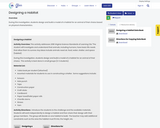
During this investigation, students design and build a model of a habitat for an animal of their choice based on physical characteristics.
- Subject:
- Science
- Material Type:
- Activity/Lab
- Author:
- Adrienne Sawyer
- Date Added:
- 07/09/2020

During this investigation, students design and build a model of a habitat for an animal of their choice based on physical characteristics.
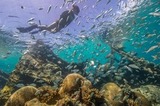
In this activity, you will design a device that will substantially impact our environment. You can write words around your device’s image to help explain your ideas. This device does not have to be realistic. See the example of how to draw a device prototype below. An example of an approach could be to create a sizable water Roomba-like device that cleans the top of a body of water and burns the trash collected. This process turns the trash into oxygen.

This video is part of the Continue to Know with WHRO TV series. Watch Claire Verdillo teach about determining relevant information.

Measuring distance to determine perimeter -- Mathematics Instructional Plans (MIPs) help teachers align instruction with the 2016 Mathematics Standards of Learning (SOL) by providing examples of how the knowledge, skills and processes found in the SOL and curriculum framework can be presented to students in the classroom.

English Instructional Plan – Determining Validity of Sources 6-8

Students use a block of clay, a spring scale, and a glass of liquid of unknown volume to determine the density of the liquid in the cup.

This textbook includes all 10 chapters of Deutsch im Blick (2nd ed, 2017). Deutsch im Blick is the web-based first-year German program developed and in use at the University of Texas. It is an open access site with free and open multimedia resources, which requires neither password nor fees.

English Instructional Plan-Developing Fluency 6-8

English Instructional Plan-Developing Objective Summaries 6

English Instructional Plan Developing Thesis Statements 6-8

Technological advances, breakthroughs in interpretation, and new observations continuously refine our understanding of the Earth and solar system. The invention of the telescope provided powerful and confounding observations that rapidly challenged the Earth-centered model. Students will investigate how technology has impacted innovations in other fields like astronomy and advanced our knowledge of the solar system substantially in the last half century.

Determine the dew point temperature for your classroom through a hands-on experiment. Use humidity and temperature probes to investigate the temperature at which it would rain in your classroom! Learn about water density and the conditions necessary to produce fog or rain.
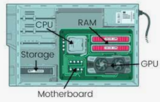
This activity will have students exploring the inside of a computer and creating a diagram or model.
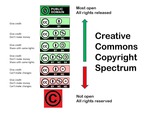
These public domain images are helpful when trying to explain how Creative Commons works, from the least restrictive (public domain) to the most restricitive (all rights reserved, or traditional copyright).

This is a google slides mini lesson on diameter and radius of a circle. The first slide consists of a definition of a diameter and radius. Students will discuss and realize the difference between the two. Then they will make a text box for the answer. They will type the answer in the text box, then complete the slides.

This resource consists of a Java applet and expository text. The applet simulates rolling n dice. The random variables of interest are the sum of the scores, the maximum score, the minimum score, and the number of aces. The number of dice and the probability distribution that governs the dice can be specified. The applet illustrates various distributions and the central limit theorem.

How to use this activity: You need a set of dice for each team or each individual if you are playing it individually. The forms provided here are completely modifiable to fit your needs. SEE Additional comments
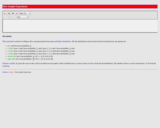
This resource consists of a Java applet and expository text. The applet simulates the rolling of n dice. The number of dice and the probability distribution that governs the dice can be specified.

In this lesson, students will increase their skills in both life science and computer science as they create their own dichotomous keys. By gathering a collection of items, they will learn how to use compound conditionals and if-statements to construct a dichotomous key that allows their classmates to identify their items accurately. This exercise encourages students to explore the life sciences and helps them develop critical thinking and programming skills necessary in computer science.
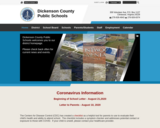
Links to Fall 2020 reopening plans and information